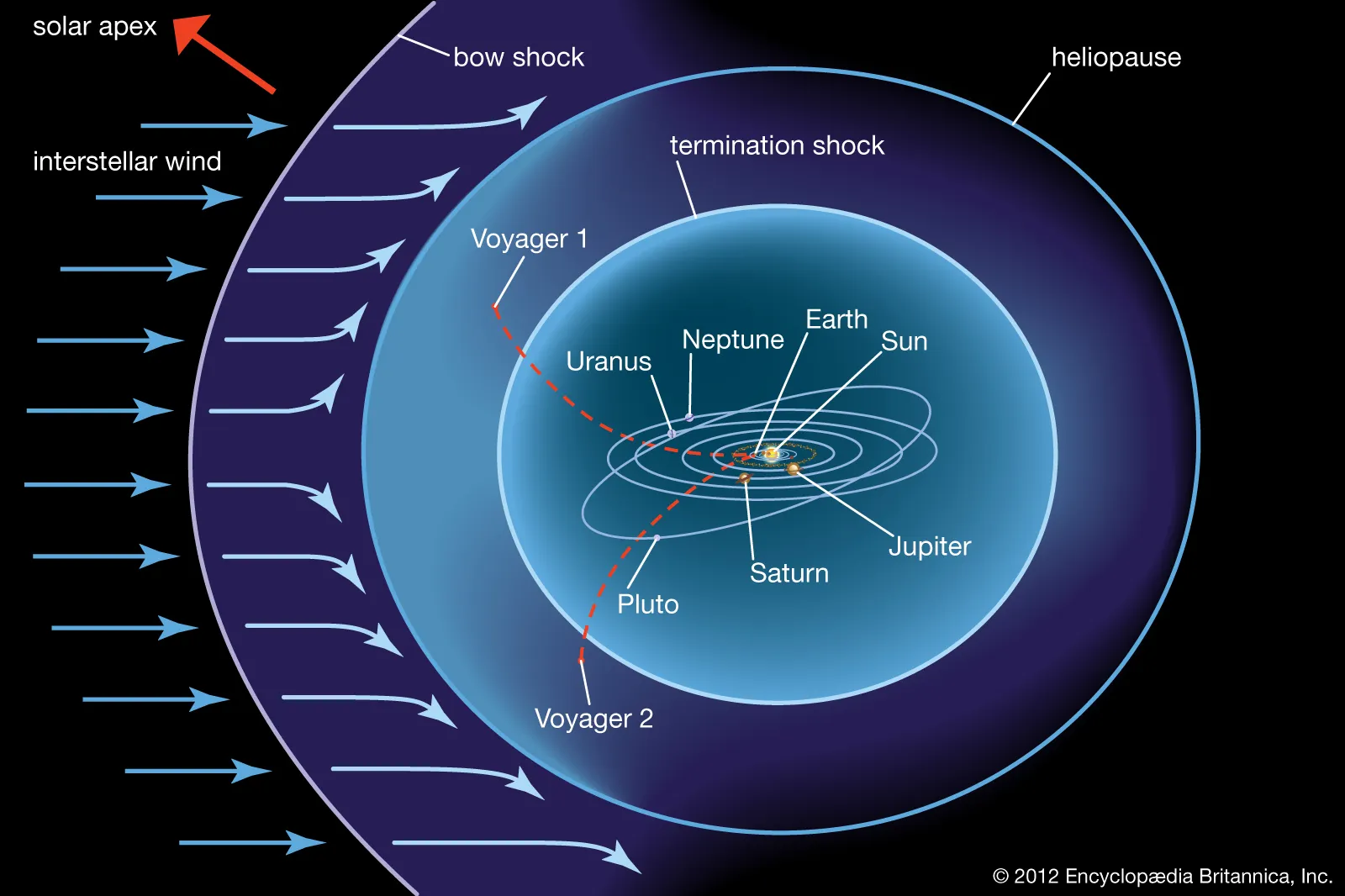In the final days before liftoff, Princeton’s Interstellar Mapping and Acceleration Probe (IMAP) stands poised to reshape our understanding of the solar system’s boundaries. This ambitious mission, set to launch aboard a Falcon 9 rocket, marks the culmination of years of international collaboration and scientific ingenuity.
IMAP’s primary goal is to provide an unprecedented look at the heliosphere, the vast invisible bubble that shields our planet and its neighbors from harmful cosmic radiation.

Image Credit: Encyclopedia Britannica
Cutting-Edge Science and Global Partnership
At the heart of IMAP are ten state-of-the-art instruments designed to probe cosmic mysteries with thirty times the sensitivity of previous missions. Unlike its predecessor, IBEX, IMAP is a much larger and more sophisticated spacecraft, representing the collective expertise of 92 U.S. institutions and partners from Europe and Asia.
The mission’s collaborative spirit extends to Princeton undergraduates, who gain hands-on experience constructing instruments and working alongside leading scientists in cleanroom environments.
- International Teamwork: Institutions from the U.S., U.K., Poland, Switzerland, Germany, and Japan contribute to IMAP’s success.
- Educational Impact: Students participate directly, learning from real-world space science challenges and innovations.
Safeguarding Earth and Enabling Human Exploration
Once in space, IMAP will travel to the first Lagrange point, about one million miles from Earth, where it will continuously monitor the Sun and solar wind. Its rapid 15-second rotations and advanced I-ALiRT system will provide early warnings for solar storms, offering up to 30 minutes’ notice before dangerous solar activity impacts Earth. This capability is vital for protecting satellites, communication networks, and astronauts preparing for deep space missions to the Moon and Mars.
- Real-Time Space Weather Alerts: IMAP detects coronal mass ejections and other solar phenomena that threaten technology and human safety.
- Critical Lead Time: Immediate data transmission gives Earth valuable minutes to prepare for potential disruptions.
Mapping the Solar System’s Shield
The heliosphere acts as a protective cocoon, blocking roughly 90% of galactic radiation from reaching our solar system. However, its exact shape and behavior remain largely mysterious. IMAP will generate high-definition maps of the heliosphere, likely confirming its comet-like form and revealing the processes at its boundary with interstellar space. These insights are key to understanding how Earth and its inhabitants are shielded from cosmic hazards.
- Detailed Boundary Mapping: IMAP’s instruments will chart where the solar wind collides with interstellar matter, producing the sharpest images of our solar neighborhood ever obtained.
- Particle Acceleration Mysteries: The mission seeks to unravel how solar particles reach extreme energies, with implications for astronaut safety and the origins of organic molecules in space.
Particles as Cosmic Messengers
Instead of traveling to the outer reaches of the solar system, IMAP analyzes particles that naturally journey inward. When solar wind particles reach the heliopause, some become neutral and return toward the inner planets. IMAP’s detectors capture these particles, allowing scientists to reconstruct the heliosphere’s shape and activity. The spacecraft also examines cosmic dust and interstellar atoms, providing clues to the composition of the galaxy and the nature of distant stars.
- Energetic Neutral Atoms: These serve as vital messengers, carrying information from the edge of the solar system.
- Cosmic Dust Insights: By analyzing interstellar grains, IMAP will enhance our understanding of galactic evolution and the flow of matter.
Unlocking Discovery Science
IMAP’s unprecedented sensitivity sets the stage for unexpected scientific breakthroughs. As history shows, new frontiers often yield surprises, and the IMAP team is prepared for discoveries beyond the mission’s original scope. Every step forward in measurement technology expands the boundaries of what we know and what we can imagine.
Looking Forward: Transforming Space Science
IMAP represents a major leap for both Princeton and the broader field of heliophysics. By mapping the heliosphere, monitoring solar activity, and exploring the physics of particle acceleration, the mission will protect humanity’s technological infrastructure and deepen our cosmic perspective. As the world anticipates launch day, IMAP promises to usher in a new era of space science and discovery.

IMAP Launch: Princeton's Bold Mission to Map Our Solar System’s Cosmic Shield